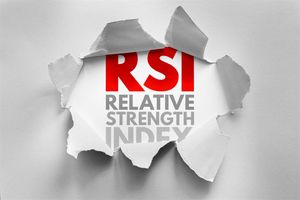
Sacramento, CA – October 3, 2025 – The California Department of Financial Protection and Innovation (DFPI) made a pivotal announcement on September 29, 2025, unveiling significant modifications to its proposed regulations under the Digital Financial Assets Law (DFAL). This move signals California's unwavering commitment to establishing a robust and comprehensive licensing and oversight framework for digital financial asset businesses operating within its borders. Coming on the heels of initial proposed regulations in April 2025 and extensive public feedback, these refined rules are poised to reshape the crypto landscape in the Golden State, setting a potential precedent for the broader U.S. market.
The modifications, which include renumbering, reorganization, further clarifications on Money Transmission Act (MTA) exemptions, and a new token listing certification for exchanges, aim to provide greater clarity and streamline compliance. This regulatory evolution is critical, as California, a global economic powerhouse and a hub for technological innovation, is actively working to balance consumer protection with fostering a safe and regulated digital asset market. While immediate, dramatic market reactions were not distinctly observed in the days following the announcement, the crypto community has been actively engaged in the regulatory dialogue, understanding that these developments carry profound long-term implications for how digital assets are exchanged, stored, and utilized across the nation.
Market Impact and Price Action
The September 29, 2025, announcement by California's DFPI, while not triggering immediate, sharp price movements in specific cryptocurrencies, represents a foundational shift that will influence investor sentiment and capital allocation over time. The Digital Financial Assets Law (DFAL), set to become fully operative for licensing on July 1, 2026, introduces a comprehensive regulatory framework that will significantly impact various crypto sectors.
For DeFi protocols, the broad definition of "digital financial asset business activity" under DFAL could bring certain interfaces or protocols dealing directly with California residents under DFPI's purview. Projects prioritizing anonymity or minimal oversight may face compliance hurdles, potentially limiting their direct access to California users. Conversely, DeFi projects that successfully integrate robust compliance measures could attract more institutional interest and risk-averse users, benefiting from enhanced regulatory legitimacy. This could lead to a bifurcation in the DeFi space, with compliant services gaining traction and non-compliant ones facing operational restrictions or an exodus from the state.
The stablecoin sector is under particular scrutiny. DFAL mandates that stablecoin issuers either be licensed as a bank or trust company or by the DFPI, and maintain eligible securities with a market value at least equal to their outstanding stablecoins. These stringent requirements, aimed at preventing collapses akin to TerraUSD, will likely standardize the stablecoin market in California, favoring asset-backed models. This could lead to increased investor confidence in compliant stablecoins, solidifying their role as a reliable medium of exchange, but may also result in market consolidation as smaller issuers unable to meet these demands exit the state.
Centralized crypto exchanges and their associated tokens will face heightened compliance burdens. The rigorous licensing process, similar to New York's "BitLicense," will increase operational costs and create higher barriers to entry for new players. The new Section 1250, requiring a token listing certification, means exchanges must conduct more rigorous due diligence and risk assessments for listed assets. For users, this promises a safer trading environment, while for compliant exchanges, it could offer a competitive advantage. Native exchange tokens tied to platforms successfully navigating these regulations may see increased legitimacy and investor confidence, whereas those from non-compliant exchanges might face de-listing or reduced activity in California. Overall, the market's long-term reaction will likely be a gradual re-allocation of capital towards entities demonstrating strong regulatory adherence.
Community and Ecosystem Response
While specific, widespread social media discussions directly referencing the September 29, 2025, DFPI modifications were not immediately dominant across crypto Twitter or Reddit, the broader sentiment within the community during this period has been one of increasing anticipation for regulatory clarity. Crypto influencers and thought leaders have consistently highlighted the growing need for clear guidelines to foster institutional adoption and market stability.
The DFPI's responsiveness to public feedback, culminating in these "significant modifications," suggests a constructive dialogue between regulators and industry stakeholders. This proactive approach, aimed at streamlining and clarifying the DFAL and MTA, has been met with a nuanced reception. While some in the community might express concerns about potential over-regulation stifling innovation—a perennial debate in the crypto space—many acknowledge that a well-defined framework can bring legitimacy and attract a wider user base. The DFPI's consistent updates to its "Crypto Scam Tracker," with new details added on the same day as the regulatory modifications, reinforces the consumer protection aspect, which is generally viewed positively by the broader public, even if some in the industry feel it adds to the compliance burden.
For DeFi protocols, NFT projects, and Web3 applications, the implications are substantial. The DFAL's broad scope and the new token listing certification requirement mean that any project seeking to operate with or on behalf of California residents will need to scrutinize its compliance framework. This could push decentralized projects towards more "permissioned" or "KYC-friendly" models if they wish to access the lucrative California market through regulated gateways. NFT marketplaces and Web3 platforms may need to enhance their due diligence on listed assets, potentially favoring projects with stronger legal and security foundations. The clarification on MTA exemptions, preventing redundant regulation, is a welcome relief, offering some operational clarity for multi-faceted crypto businesses. Overall, the community's response reflects an ongoing adaptation to a rapidly maturing regulatory environment, with a clear understanding that compliance is becoming non-negotiable for long-term viability in key markets like California.
What's Next for Crypto
California's DFPI modifications, announced on September 29, 2025, are more than just bureaucratic adjustments; they represent a significant stride towards a highly regulated and institutionalized crypto market in one of the world's largest economies. The implications, both short-term and long-term, are profound for the entire U.S. crypto ecosystem.
In the short-term (leading up to July 1, 2026), crypto projects and businesses in California will be in an accelerated phase of compliance preparation. The clarity provided by the renumbered regulations, MTA exemptions, and definitions will guide companies in understanding the scope of DFAL. Exchanges will particularly focus on implementing robust disclosure and risk assessment procedures for the new token listing certification. This period will be marked by increased legal consultations, internal restructuring, and potentially a temporary slowdown in certain business activities as companies prioritize obtaining or preparing for licensure. Proactive engagement with the DFPI and meticulous adherence to the evolving guidelines will become a key competitive differentiator, attracting early adopters and institutional interest.
The long-term implications (post-July 1, 2026) will see California solidifying its position as a leader in state-level crypto regulation, potentially serving as a bellwether for federal policy. The formalized licensing framework will bring unprecedented legitimacy and consumer protection, fostering greater trust and potentially driving broader mainstream adoption. However, this will come with increased compliance costs, potentially leading to market consolidation as smaller entities struggle to meet the stringent requirements. The specific stablecoin regulations, mandating commissioner approval and strict backing, will likely professionalize this sector, reducing systemic risks. California's exploration of a pilot program to accept crypto payments for state fees, starting July 1, 2026, could serve as a powerful catalyst, further integrating digital assets into the state's financial infrastructure and influencing public perception and regulatory attitudes.
Several potential catalysts could further shape this trajectory. Clear federal legislation on digital assets or stablecoins could either align with or preempt California's framework, necessitating further adaptation. Major crypto market events, such as significant hacks or collapses, could intensify regulatory scrutiny, while rapid technological advancements might challenge existing definitions, prompting further regulatory modifications. Strategic considerations for projects include prioritizing licensure, implementing robust compliance frameworks, and potentially reassessing geographic operational strategies. Investors should prioritize due diligence on projects' regulatory compliance, monitor DFPI updates closely, and factor in increased compliance costs and potential market consolidation into their risk assessments. The most likely scenario is California serving as a regulatory template, leading to a more harmonized yet stringent U.S. crypto market, fostering innovation within clear, consumer-protective guardrails.
Bottom Line
California's DFPI modifications to digital financial asset regulations, announced on September 29, 2025, mark a definitive step towards a mature and regulated crypto ecosystem. For crypto investors and enthusiasts, the key takeaway is clear: the era of unregulated "wild west" crypto operations in California is rapidly drawing to a close. Starting July 1, 2026, virtually all entities engaging in "digital financial asset business activity" in the state, from exchanges to wallet providers, must be licensed or have a pending application with the DFPI. This mandate underscores a commitment to enhanced consumer protection, robust financial stability, and greater accountability within the industry.
The long-term significance of these regulations for crypto adoption is substantial. By establishing clear rules of engagement, California aims to build trust and legitimacy, which are critical for attracting mainstream and institutional adoption. While some may view stringent regulations as a hindrance to innovation, a well-defined framework can also provide the certainty needed for legitimate businesses to thrive and for new, compliant products and services to emerge. The focus on stablecoin backing, clear disclosures, and anti-fraud measures creates a safer environment, potentially reducing the volatility and risk perception associated with digital assets. As California is a major economic and technological hub, its regulatory approach could very well serve as a blueprint for other states and even influence federal crypto policy, driving a national trend towards a more structured and professionalized crypto market.
Important dates to monitor include July 1, 2026, the critical deadline for licensing applications. Beyond this, investors should closely watch ongoing DFPI rulemaking and guidance, the progress of stablecoin approvals, and any future enforcement actions, which will provide crucial insights into the regulatory landscape. Metrics such as the number of licensed entities and consumer complaint data will offer a barometer of the regulations' effectiveness and the industry's adaptation. Ultimately, these regulations signal a future where crypto in California operates within clear legal boundaries, fostering a more secure and sustainable environment for its continued growth and integration into the broader financial system.
This article is for informational purposes only and does not constitute financial or investment advice. Cryptocurrency investments carry significant risk.





